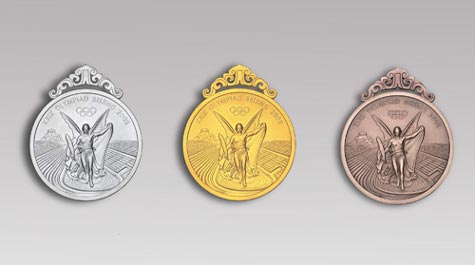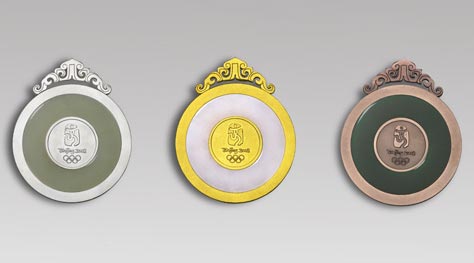The much-awaited Companies Bill, 2008 has been introduced in the Lok Sabha. Minister of Corporate Affairs, Shri Prem Chand Gupta introduce the Bill to consolidate and amend the law relating to companies. Two days ago, i.e., on 21.10.2008 Shri Gupta had withdrawn the Companies (Amendment) BIll, 2003 which was introduced in the Rajya Sabha on 7.5.2003 as the said Bill was not in tune with the present day requirements of corporates in
The Companies Bill, 2008 is intended to modernize the structure for corporate regulation in
The comprehensive revision of the Companies Act, 1956 was taken up by the Ministry since not only had the number of companies in India expanded from about 30,000 in 1956 to above 7 lakhs today, the Indian corporate sector had also transformed itself in a manner that was unimaginable even a decade ago. Today, Indian companies have expanded and grown into global entities, continuously entering into and bringing new activities into the fold of the Indian economy. In doing so, they are emerging internationally as efficient providers of a wide range of goods and services while increasing employment opportunities at home.
At the same time, there is a requirement to enable corporate regulation in an effective and efficient manner with reasonable costs of compliance so that Indian companies are competitive in attracting investment for growth.
The review and redrafting of the Companies Act, 1956 was taken up by the Ministry of Corporate Affairs on the basis of a detailed consultative process. A `Concept Paper on new Company Law’ was placed on the website of the Ministry on
The Companies Bill, 2008 seeks to enable the corporate sector in
The Bill reinforces shareholders democracy, facilitates e-Governance in company processes, recognizes the liability of Boards, directors and senior management personnel of companies, provides for a new scheme for penalties and punishment for non compliance or violation of the law, harmonizes corporate regulation with action by sectoral regulators, incorporates a new framework for mergers and amalgamations of companies and provides an extensive Insolvency Code based on the latest principles recommended by the United Nations Commission on International Trade Law (UNCITRAL).
Briefly, the Bill provides for :-
(i) The basic principles for all aspects of internal governance of corporate entities and a framework for their regulation, irrespective of their area of operation, from incorporation to liquidation and winding up, in a single, comprehensive, legal framework to be administered by the Central Government. In doing so, the Bill also seeks to harmonise the Company law framework with the sectoral regulation;
(ii) articulation of shareholders democracy with protection of the rights of minority stakeholders, responsible self-regulation with adequate disclosures and accountability. Reduction of Government control over internal corporate processes;
(iii) easy transition of companies operating under the Companies Act, 1956, to the new framework as also from one type of company to another. Freedom with regard to the numbers and layers of subsidiary companies that a company may have, subject to disclosures in respect of their relationship and transactions or dealings between them;
(iv) a new entity in the form of One-Person Company (OPC) while empowering Government to provide a simpler compliance regime for small companies. Retention of the concept of Producer Companies, while providing a more stringent regime for companies with charitable objects to check misuse;
(v) application of the successful e-Governance initiative of the Ministry of Corporate Affairs (MCA-21) to all the processes involved in meeting compliance obligations. Company processes may also be carried out through electronic mode;
(vi) speedy incorporation process, with detailed declarations and disclosures about the promoters, directors etc., at the time of incorporation itself. Every company director would be required to acquire a unique Director Identification number (DIN);
(vii) relaxation of restrictions limiting the number of partners in entities such as partnership firms, banking companies etc., to a maximum 100, with no ceiling as to professional associations regulated by Special Acts;
(viii) duties and liabilities of the directors and every company to have at least one director resident in
(ix) statutory recognition to audit, remuneration and stakeholders relationship committees of the Board and the Chief Executive Officer (CEO), the Chief Financial Officer (CFO) and the Company Secretary to be as Key Managerial Personnel (KMP);
(x) companies not to be allowed to raise deposits from the public except on the basis of permission available to them through other Special Acts. The Bill prohibits insider trading by company directors or Key Managerial Personnel and declares it as an offence with criminal liability;
(xi) recognition of both accounting and auditing standards. The role, rights and duties of the auditors defined so as to maintain integrity and independence of the audit process. Consolidation of financial statements of subsidiaries with those of holding companies is proposed to be made mandatory;
(xii) a single forum for approval of mergers and acquisitions along with a shorter merger process for holding and wholly owned subsidiary companies or between two or more small companies as well as recognition of cross border mergers. Concept of deemed approval also provided in certain situations;
(xiii) a framework for enabling fair valuations in companies for various purposes. Appointment of valuers is proposed to be made by audit committee or in its absence by the Board of Directors;
(xiv) claim of an investor over a dividend or a benefit from a security not claimed for more than a period of seven years not to be extinguished, and Investor Education and Protection Fund (IEPF) to be administered by a statutory authority;
(xv) shareholders associations or group of shareholders to be enabled to take legal action in case of any fraudulent action on the part of company and to take part in investor protection activities and ‘Class Action Suits’;
(xvi) a revised framework for regulation of insolvency, including rehabilitation, liquidation and winding up of companies and the process to be completed in a time bound manner;
(xvii) consolidation of fora for dealing with rehabilitation of companies, their liquidation and winding up in the single forum of National Company Law Tribunal with appeal to National Company Law Appellate Tribunal with suitable transitional provisions. The nature of the Rehabilitation and Revival Fund proposed in the Companies (Second Amendment) Act, 2002 to be replaced by Rehabilitation and Insolvency Fund with voluntary contributions linked to entitlements to draw money in a situation of insolvency;
(xviii) a more effective regime for inspections and investigations of companies while laying down the maximum as well as minimum quantum of penalty for each offence with suitable deterrence for repeated defaults. Company is identified as a separate entity for imposition of monetary penalties from the officers in default. In case of fraudulent activities, provisions for recovery and disgorgement have been included;
(xix) levy of additional fee in a non-discretionary manner for procedural non-compliance, such as late filing of statutory documents, to be enabled through rules. Defaults of procedural nature to be penalised by levy of monetary penalties by the adjudicating officers not below the level of Registrars. The appeals against orders of adjudicating officers to lie with suitably designated higher authorities;
(xx) Special Courts to deal with offences under the Bill. Company matters such as mergers and amalgamations, reduction of capital, insolvency including rehabilitation, liquidations and winding up are proposed to be dealt with by the National Company Law Tribunal.








